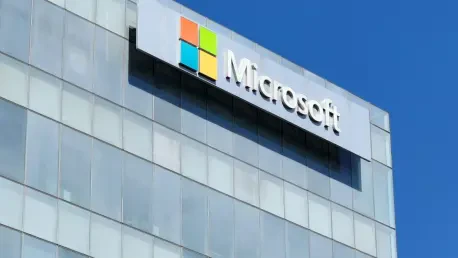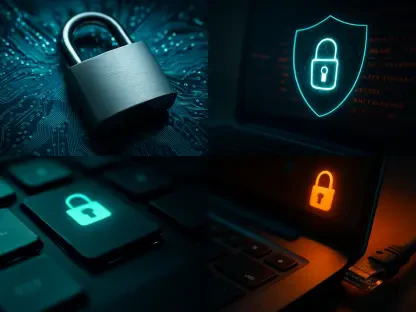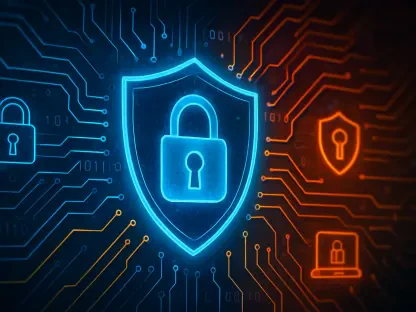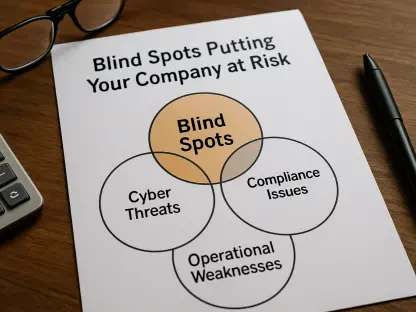In response to several high-profile cyberattacks, Microsoft has launched an extensive cybersecurity initiative designed to strengthen its internal security practices and protect its users. These breaches, linked to nation-state actors, prompted the tech giant to reevaluate its approach to security, resulting in the creation of the Secure Future Initiative (SFI). This initiative seeks to embed a security-first mindset throughout the company while addressing vulnerabilities and enhancing the overall cybersecurity infrastructure. The magnitude of these breaches, which affected key government departments and compromised sensitive information, highlighted the need for immediate and robust action.
Enhanced Internal Cybersecurity Governance
Implementation of Secure-by-Design Toolkit
One of the cornerstones of Microsoft’s Secure Future Initiative is the comprehensive integration of security protocols within its internal processes. The company has mandated the use of a secure-by-design toolkit for its 22,000 product development employees. This toolkit ensures that security measures are prioritized from the initial design phases through to the final production of all Microsoft products. Additionally, stringent security standards have been incorporated into employee performance reviews, aligning individual accountability with organizational security objectives.
The secure-by-design toolkit, coupled with enhanced training programs, is designed to create a culture where security is ingrained in employee practices. This shift represents a significant change from previous practices, where speed and innovation often took precedence over security considerations. The introduction of this toolkit is a strategic move to prevent future breaches by addressing potential vulnerabilities during the early stages of development.
Appointment of Deputy CISO and Security Training
Recognizing the importance of specialized leadership in cybersecurity, Microsoft appointed a deputy Chief Information Security Officer (CISO) for business applications. This role focuses on overseeing and implementing security measures specific to Microsoft’s suite of business applications, which are critical to many enterprise customers. This appointment underscores the company’s commitment to robust cybersecurity governance and the continuous assessment and improvement of its security posture.
Alongside leadership changes, Microsoft has also ramped up its internal security training programs. These programs aim to equip employees with the knowledge and skills needed to identify and mitigate security threats effectively. By fostering a security-first mindset, Microsoft is ensuring that its workforce is well-prepared to handle the ever-evolving landscape of cyber threats.
Progress and Achievements Under SFI
Advancements in Phishing-Resistant Multifactor Authentication
Since the launch of the Secure Future Initiative, Microsoft has made notable progress in enhancing its security practices and reducing vulnerabilities. A significant achievement in this regard is the widespread implementation of phishing-resistant multifactor authentication (MFA). To date, 92% of productivity accounts within the company now utilize this advanced MFA, a critical defense mechanism against phishing attacks. By making it more challenging for attackers to gain unauthorized access, this measure has greatly strengthened account security.
In addition to MFA, Microsoft has made considerable strides in addressing cloud vulnerabilities. The company reports a 73% success rate in identifying and mitigating these vulnerabilities, reflecting a proactive and systematic approach to cloud security. As cloud services become increasingly integral to business operations, ensuring their security is paramount.
Removal of Legacy Tenants and Increased Security Measures
Another significant milestone under the Secure Future Initiative is the removal of over 6.3 million legacy tenants, including more than 550,000 since September 2024. These legacy systems often pose security risks due to outdated protocols and insufficient defenses. By systematically identifying and eliminating these vulnerabilities, Microsoft has significantly bolstered the overall security of its cloud infrastructure.
Charlie Bell, executive vice president of security at Microsoft, has emphasized the importance of fostering a security-first mindset across all employees. Bell’s leadership and strategic direction have been instrumental in driving the success of the Secure Future Initiative. Under his guidance, the company has made substantial progress on 11 of the 28 objectives outlined in the SFI plan announced in 2023, with five nearing completion.
Response to Criticism and Future Outlook
Addressing Market Priorities and Security Criticism
The necessity for the Secure Future Initiative became apparent following severe breaches, such as the China-linked hack that accessed 60,000 emails from the U.S. State Department, and a Russia-backed attack targeting top executives. These incidents exposed inherent flaws in Microsoft’s focus on market speed and innovative features over secure development practices. The aftermath of these breaches led to harsh criticism from entities like the Cyber Safety Review Board, condemning Microsoft for preventable security lapses and urging a reassessment of their priorities.
In response to this criticism, Microsoft has taken decisive steps to embed security into the core of its operations and production processes. The company’s actions demonstrate a commitment to not only rectifying past mistakes but also establishing a solid foundation for future security endeavors. This shift towards prioritizing security over market speed is a fundamental aspect of the Secure Future Initiative, reflecting the company’s acknowledgment of the importance of robust cybersecurity practices.
Long-Term Benefits and Strategic Objectives
The Secure Future Initiative’s comprehensive measures reflect an organizational shift towards creating a sustainable and secure operational environment. This initiative serves as a blueprint for other tech companies facing similar security challenges, showcasing the importance of integrating security into every aspect of product development and employee engagement. By fostering a security-first culture and implementing rigorous security standards, Microsoft aims to mitigate risks and prevent future breaches.
The company’s ongoing efforts under the Secure Future Initiative signify a long-term commitment to safeguarding its enterprise and user information. As the digital landscape continues to evolve, these proactive measures are essential in maintaining trust and confidence among customers and stakeholders. Microsoft’s approach serves as a testament to the critical role of cybersecurity in modern business practices, setting a precedent for continuous improvement and vigilance.
Strategic Vision for a Secure Future
In light of several high-profile cyberattacks, Microsoft has initiated a comprehensive cybersecurity strategy to bolster its internal security measures and safeguard its users. These intrusions, which have been attributed to nation-state actors, drove Microsoft to reassess its security framework, leading to the launch of the Secure Future Initiative (SFI). The SFI aims to instill a security-first mentality across the company while tackling weaknesses and improving the overall cybersecurity framework. The severity of these breaches, impacting crucial government agencies and exposing sensitive data, underscored the urgent necessity for robust and immediate action. As part of this initiative, Microsoft is not only emphasizing the importance of a consistent security culture within the organization but is also dedicated to continuous advancements in protecting against future threats. This ambitious program marks a significant step in Microsoft’s ongoing effort to address the complexities of modern cybersecurity challenges and fortify its defenses against evolving threats.









